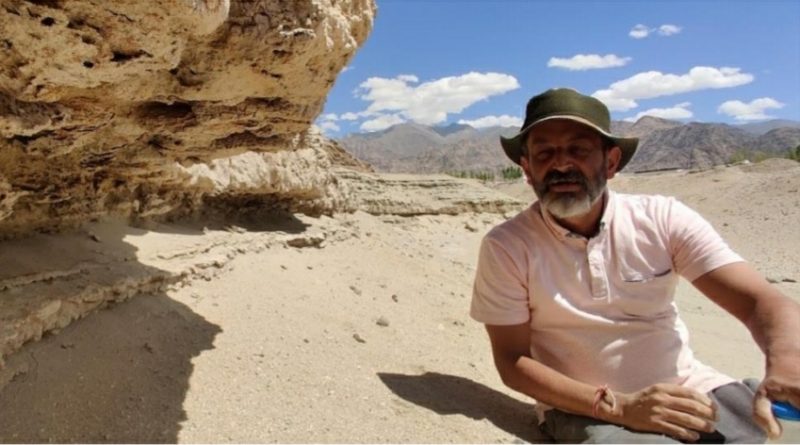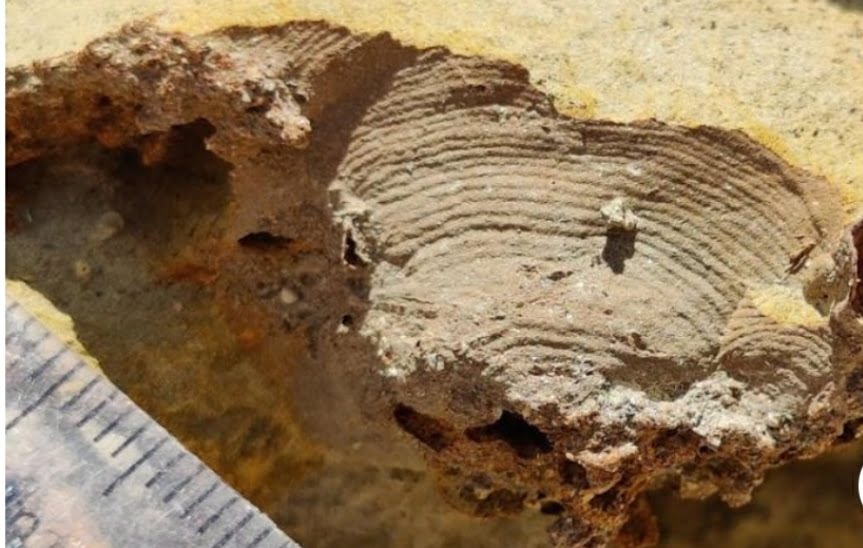Leh, Ladakh, Lahaul Spiti region of Himalayas unfolding geo heritage : Experts
Himalayas is considered young mountain ranges of the world, slowly unfolding as treasure house for paleontologists as geo heritage site are being located along various dried and existing lakes, sedimentary deposit by the experts recently
We have reported earlier that concerned archeological authority have imposed precautionary restrictions on the anthropogenic activities and starting vigil along all such places where links were established during study by the paleontologist and archeologists in the recent times.
As we know that Himalayas is mountain in making continue due to Eurasian tectonic plates thrust and reminiscent of Eurasia exists in region like Ladakh, Leh and Lahaul Spiti.
This natural Geo-activities phenomenon confirmed and established by the increasing height of summit of Mountain Everest in Himalayas having new height 8,848.86m (29,032 ft) which is 0.86 meter or 86 cm more than previously measured 8848 m.
Presence of Eurasia also being confirmed by presence of saline water of Pangong lake and other deposits as Rock Salt also being found in the Himalayas. Darang area have massive deposit of Rock salt in the Mandi district of Himachal Pradesh.
Recent study established by the Geo-Archeological experts now present a new dimension unexplored that number of lakes which have ruined down the history or present existing lakes revealed similar strong link of bygone era.
These experts told us that Lakes of present and past in Ladakh have fascinated the human since time immemorial and these lake played important role for the traders on the old silk route.
” If we say Leh and surrounding areas was a city of Lakes thousand years ago which were more beautiful and extravagant then the present lakes of Pangong and Tsomo-riri ,there will be no exaggeration .”
This is what is claimed by Dr Ritesh Arya of Indian Geoparks and his team comprising of Mohamad Iliyas and Kunzang Dolma of Ladakh Science Foundation who has been researching on these lake sediments. The basis of their claim is the presence of freshwater fossils of mollusks and plants found in the paleolake deposits which were earlier considered devoid of any life.
This is the 1st report of fossils from the paleolake deposits. These fossils were found when they were doing detailed investigation for the reconstruction of the events for the formation and development of the paleolake at Shey.
The story started when group of about 30 students from Ladakh Science Foundation approached Dr Ritesh Arya to explain the presence of Lake and appearance of mud cracks on the surface of the raised structure in Shey.
The stupas in Shey had fascinated everyone and Dr Arya Guinness World Record holder was no exception the question of so many stupas had been intriguing him for long.
After some observations he thought that there was relationship between Stupas and Lake. He discussed the matter with Tashi of Ladakh Science Foundation and both agreed to work on the project to find the truth. Preliminary investigations showed that there was a relationship between the Stupas and the floods.
Everyone got interested and after detailed study a particular pattern was observed in the manner the stupas were placed. They were a perfect mechanism of defense from floods to Shey village Strategically important because this was the 1st palace in Leh built in 10th century.
Then interest grew in the lake boundary its formation and development. After detailed
investigations for the first time shows discovery of existence of life in the form of fossils of plant (with hollow stems very well preserved in the multiple beds)and fresh water molluscs in the lacustrine deposits (at an altitude of 3000mtrs above mean sea level) in the cold mountain deserts of Ladakh.
These findings were presented in the International Webinar on Mollusks and Ancient Human Societies & Meeting of AMWG. 28-30th September, 2021.
The networks of the roots of plants with nodules formed at their tips are also very well preserved showing adaptive mechanism of plants to help them float in the lakes ,these hydrophiles with their adaptive mechanism if analyzed can help in understanding the morphological changes these plants have under gone to survive in the extreme conditions .
Identification of these fossils will help in paleo environmental reconstruction and understanding the paleo-climatic changes. Samples have been sent for investigation to Director Birbal Sahni Institute of paleo sciences Lucnow Precise dating of the organic matter preserved will help in calculating the actual age of the lake sediments and the changes it has undergone in geological time.
These findings will help in understanding cyclicity of global warming and cooling which will play important role in establishing the climate change event since last ice age around 11717years from present day.
Various geological events leading to the formation of boundary of lake during cooling times, formation of lake after advent of warming conditions when the glaciers started receding due to warming leading to development of Lake with recharging from glacial melts.
This was followed by flooding which brought material from Matho across Indus river momentarily blocking river Indus and later breaching the wall of the lake in the past which led to sudden influx of sediments and finally raising its levels. Evidences of flooding from Stagmo are also recorded in the section.
These caused lot of damage to the Shey village. In response to this many Stupas and Manay walls were build in Shey to protect the village and lake downstream.
On careful observation a particular pattern of orientation of Stupas was found which was effective mechanism for defense against flash floods from Stagmo glacial melt.
But unprecedented landslides and mud creep caused due to cloud burst brought lot of debris from Northern and Northwestern part of Ladakh batholith all these activities in the past further reduced the Lake into the pond. Many walls were still constructed around the pond.
But this time these walls were made of clay from the pond and not of the stones. These Stupas were more ornamental and ritual in nature and today are in a much degraded conditions then stupas build in earlier times. Evidence of convolutions formed due to frost action are also very well preserved.
In top section evidences of seismic events are visible showing paleo-seismic activity in the past. But still no evidences of what ultimately caused the death of lake was still unknown? Then the answer came when the surface of the pond was examined.
The answer was simple drying of the pond in the lake because the Stagmo glacier in the past receded and failed to feed the pond and the lake died.
Dr Arya says the present site which holds these evidence of climate change, fossils, flash floods etc needs preservation & conservation and should be declared as Geoheritage site of great importance as these sections hold the key to understand the changes in climate and response of humans to this and changes site has undergone in the past.
This also shows how the lamas kings engineers planned to tackle climate changes using natural resources.
All this detailed study will help in conservation and boost geotourism in this part of the Himalayas, expert says continuing their exploration in the region.




